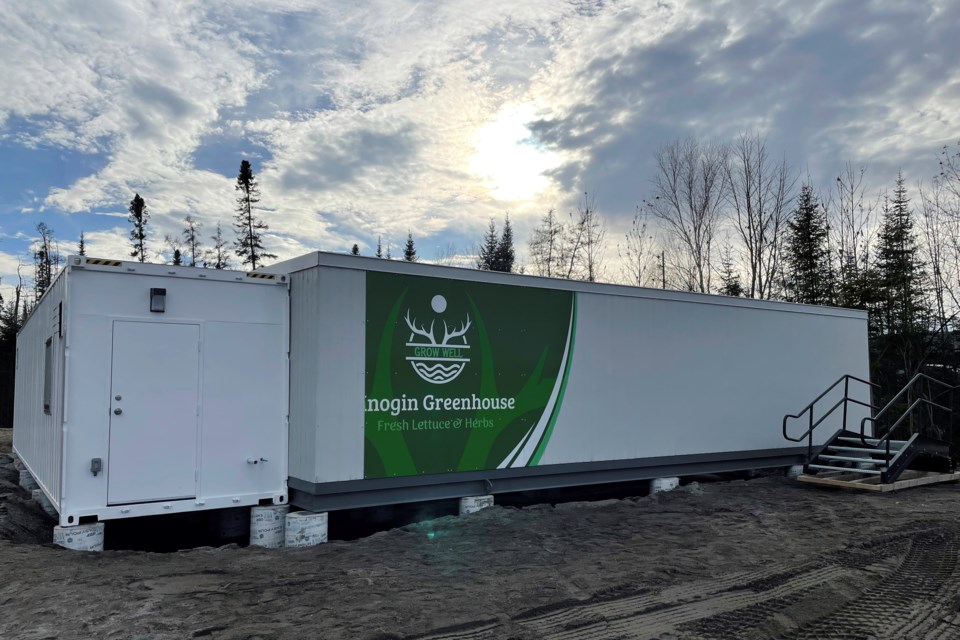Nipissing First Nation is putting the final touches on a new greenhouse project—the Mnogin Greenhouse (pronounced Mi-noh-gin, with a hard ‘g’)—and all should be complete early in the new year.
The structures are in place—they were delivered to Jocko Point mid-November—however, the greenhouses are not yet operational, as the water and hydro have yet to be connected. But they will be operational soon, and once they are, expect a bounty of lettuce and other leafy greens.
At least that’s what’s on deck for the first few harvests. Produce may change with time as more space is added, but the greenhouses are going to provide an estimated 15,000 kilograms of greens annually, and that’s a lot of lettuce.
Romaine and butterhead to be exact, mingled with some Asian greens, and some herbs like mint and basil. Such are the greens destined to fill the greenhouses, which are about the same size as a sea can, or the trailer on a big rig. Each section is 40 feet long, 10 feet wide, and just over 8 feet high. There is one used for packing and preparing the produce, and three units connect to it, and those three are the grow units.
It’s a unique addition to the community, noted Nipissing First Nation Chief Scott McLeod. Not only will the greenhouses provide nutritious produce year-round, but the greenhouse creates some new work in the community. As of now, two jobs have been created, and if the project works, more grow units will be added, and more jobs could follow.
“There are some unique jobs that will come out of it,” Chief McLeod said, and the site will be a boon for those interested in the agricultural field. “With market prices these days, it’s difficult to eat healthy,” and having a local, reliable source of food will strengthen the community.
Still in the early stages, the distribution model has not been finalized, but ideally, the lettuce and greens will find their way to markets and restaurants throughout the region.
Fresh food options are too-often “limited” within Northern First Nations, Chief McLeod added, and this greenhouse project will serve as a model for other communities to follow. “We could do one of two things,” Chief McLeod said, “we could provide vegetables at a better price to them, and we could provide training and development so they can run their own in the north.”
The greenhouses are fully contained and designed for cold weather, so placing them further north would be ideal to help increase food security. “Nipissing is leading by example,” Chief McLeod said, “and willing to work with other First Nations to help them fulfill whatever needs they might have.”
The greenhouses are hydroponic, with “a small footprint on the environment,” plus being local, transportation is kept to a minimum which also keeps things green.
See: Prepping for produce at Nipissing First Nation
The province and the federal government through NOHFC and FedNor each contributed $270,000 to the project, which allowed for the purchase of the greenhouses and operational funds to get things growing. “I think the government sees the value in this type of project,” Chief McLeod said, “so we graciously accepted the funding assistance from both the provincial and federal government,” to help sprout the seed.
“Our options are fairly limitless now,” Chief McLeod noted. With the greenhouses almost ready to produce “we’ll let the business grow and see where it takes us.”
David Briggs is a Local Journalism Initiative reporter who works out of BayToday, a publication of Village Media. The Local Journalism Initiative is funded by the Government of Canada.
